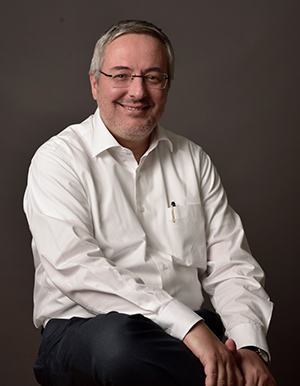Cláudio M. Soares Lab

 |
The Protein Modelling Laboratory works on molecular modelling of proteins using computational biophysical methods. Redox proteins, ABC transporters, viral membrane fusion proteins and enzyme engineering are some examples of the work developed. |
|
Cláudio M. Soares Phone (+351) 214469734 Extension 69734 |
|
Research Interests
The Protein Modeling Laboratory employs computational biophysical methods to investigate the molecular structure and dynamics of proteins. Its members possess a diverse range of expertise, traversing the spectrum from fundamental research in protein modeling techniques to applications with biotechnological and biomedical implications. Founded in 1999, the laboratory initially centered on redox proteins (e.g., cytochromes, haem-copper oxidases, laccases, and hydrogenases), but has steadily expanded its scope to encompass new research domains, including ABC transporters, viral fusion mechanisms, enzyme engineering, and more. The interaction with experimental laboratories is essential for our current research, which is primarily focused on the design of non-conventional biologicals to combat viral infection and engineering enzymes for the production of high-value compounds.
Group Members
- Cláudio M. Soares (PI)
- Diana Lousa (PI)
- Mariana Valério (PhD student)
- Alexandra Balola (PhD student)
- Pedro Moreira (PhD student)
- Carolina Buga (PhD student)
- Susana Parreiras (PhD student)
- Rita Teixiera (PhD student)
- João Correia (Master student)
- Rafael Salgueiro (Master student)
- Madalena Marques (Master student)
- Benedita Pereira (Master student)
- Fábio Queiroz (Master student)
- Diogo Silva (Research fellow)
- Ricardo Affeldt (Visiting Researcher)
- Helena Salles (Visiting Researcher)
Selected Publications
- Valério M, Mendonça DA, Morais J, Buga CC, Cruz CH, Castanho MARB, Melo MN, Soares CM, Veiga AS and Lousa D (2022) “Parainfluenza Fusion Peptide Promotes Membrane Fusion by Assembling into Oligomeric Porelike Structures”, ACS Chemical Biology, 17, 1831-1843
- Valério, M, Borges-Araújo, L, Melo, MN, Lousa, D, Soares, CM (2022) “SARS-CoV-2 variants impact RBD conformational dynamics and ACE2 accessibility”, Frontiers Medical Technology. Pharmaceutical innovation, 4:1009451
- Lousa, D, Pinto, ART, Campos, SRR, Baptista, AM, Veiga, AS, Castanho, MARB, Soares, CM (2020), Effect of pH on the influenza fusion peptide properties unveiled by constant-pH molecular dynamics simulations combined with experiment, Scientific Reports, 10:20082
- Abreu, B, Lopes, EF, Oliveira, ASF, Soares, CM (2020) “The mutation F508del disturbs the dynamics of the nucleotide binding domains of CFTR before and after ATP hydrolysis”, Proteins, 88, 113-126
- Barbosa, TM, Baltazar, CSA, Cruz, DR, Lousa, D, Soares, CM (2020) “Studying O2 pathways in [NiFe]- and [NiFeSe]-hydrogenases”, Scientific Reports, 10: 10540
Laboratory's Website
For further information please visit the laboratory's website
Modelação de Proteínas (PT)
O Laboratório de Modelação de Proteínas emprega métodos biofísicos computacionais para investigar a estrutura molecular e a dinâmica das proteínas. Os seus membros possuem um leque diversificado de competências, abrangendo desde a investigação fundamental em técnicas de modelação de proteínas até aplicações com implicações biotecnológicas e biomédicas.
Fundado em 1999, o laboratório centrou-se inicialmente nas proteínas redox (por exemplo, citocromos, hemocopper oxidases, laccases e hidrogenases), mas tem vindo a alargar o seu âmbito de modo a abranger novos domínios de investigação, incluindo os transportadores ABC, os mecanismos de fusão viral, a engenharia enzimática, etc.
A interação com laboratórios experimentais é essencial para a nossa investigação atual, que se centra principalmente na conceção de produtos biológicos não convencionais para combater a infeção viral e na engenharia de enzimas para a produção de compostos de valor acrescentado.








